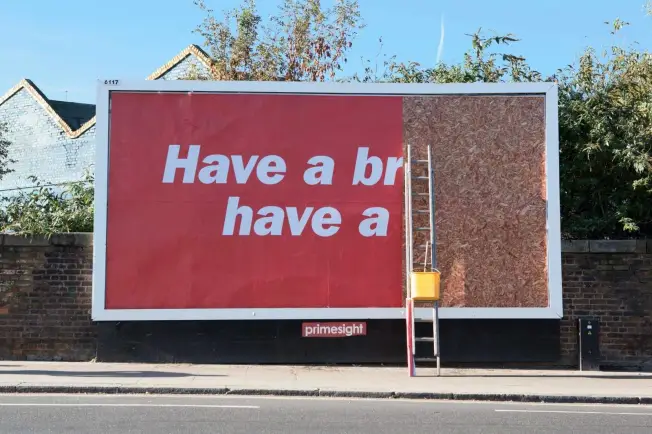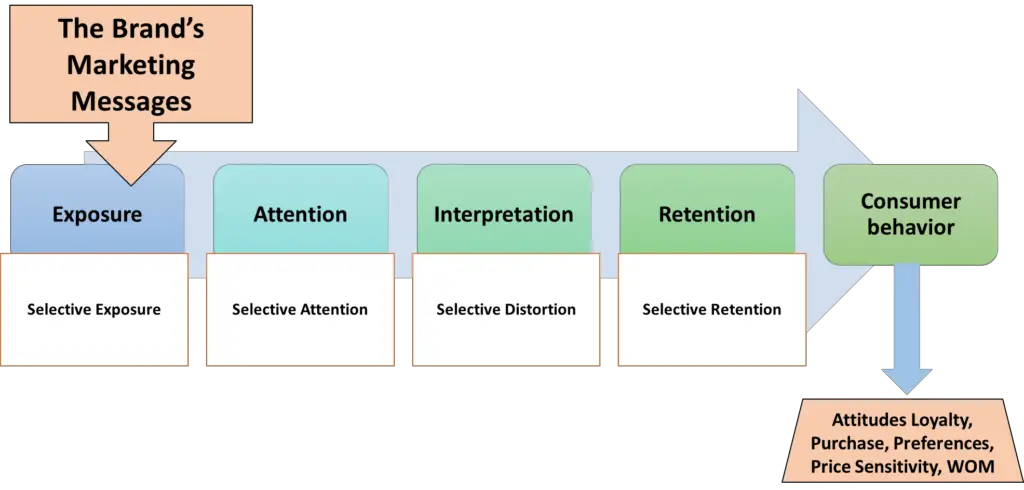Contents
- 1 An Overview of Selective Retention
- 1.1 How Does Selective Retention Impact Brand Positioning?
- 1.2 Identifying Brand Positioning Problems Using Perceptual Maps
- 1.3 What Can Marketers Do to Overcome Selective Retention?
- 1.4 Where Selective Exposure Fits into the Perceptual Process
- 1.5 Related Video: Understanding the Perceptual Process in Marketing
- 2 Perceptual Maps 4 Marketing
An Overview of Selective Retention
Selective retention refers to the process where consumers “choose” to remember and recall information that aligns with their existing attitudes, beliefs, and needs while forgetting or overlooking contradicting information.
In a marketing context, selective retention means that consumers are more likely to remember positive information about brands they like and forget negative information.
For example, if we hold a very positive attitude toward Apple – then we are more likely to remember and recall their product successes and breakthrough innovations. However, if they have a failed product or a weak product feature, we are less likely to add that to our memory bank.
In other words, there is a tendency for us as consumers to to choose to remember the information that we want to remember. This mental process helps support our existing views, and ensures that we avoid cognitive dissonance – which is where we hold conflicting thoughts/ideas.
This means that selective retention is both deliberate and unintentional. It is deliberate because we disregard information that is inconsistent with our understanding – and it is unintentional because we simply cannot remember every piece of information that comes our way.
As an example – think about when you went through school and how much information will you given, studied, and even memorized in the short term – and how much of that information has been retained today – I would guess very little in terms of the overall percentage of information that you received in your school years.
How Does Selective Retention Impact Brand Positioning?
What a consumer chooses to retain = retention – is critical to our ultimate brand positioning. As we know, positioning is how the consumer understands our product (its benefits, key features, and advantages as compared to our competitors).
Therefore, if a consumer chooses to “selectively retain” information, then our brand positioning will simply not be executed as intended. This is why we look at perceptual to understand how consumers really see our brand – rather than what has been planned by marketing in terms of our brand positioning.
There are challenges all along the way of the consumer’s perceptual process – from exposure to attention to interpretation/distortion and then finally to retention. As marketers, we need to work across all of those barriers and challenges.
That’s why perceptual maps – using real consumer data – is critical to evaluating the success of our brand positioning and evaluating the overall impact of our marketing communications and overall marketing mix elements.
Identifying Brand Positioning Problems Using Perceptual Maps
By comparing and contrasting our positioning maps (where we believe we should be positioned or we have attempted to be positioned) and the consumer’s perceptual maps (how the consumer actually sees our brand relative to competitors) – then we can clearly identify how effectively we have been positioned.
In other words, we need to overlay our positioning goals against out positioning reality – as shown in the following perceptual example. In this map, we can see there is an inconsistency between our intended plans and actual branding outcomes in the market.
This map shows two banks – with Bank B having a difference between the consumer’s perception, where they currently in terms of their marketing mix offering (actual), and where they want to be perceived in the future (goal).
What Can Marketers Do to Overcome Selective Retention?
Give Multiple Memory Cues
As marketers, let’s not just rely upon one form of communication. We need to ensure that consumers are prompted to remember. Our brand information may be tucked away in their mind is somewhere.
For example, the chances are that you know a song lyric when you hear it played – even though the song may be several years old. But if somebody had asked you if you know the words to the song, you might answer no – but when you heard the song – somehow your memory was reengaged.
The same concept will occur with consumers. So we provide them with additional ways of recalling our brand, especially when shopping in-store or online. If we have embarked on a recent advertising campaign – say on TV or online – that it would make sense to have posters and signage in stores.
For example, if McDonald’s had a new burger, then you would also see signage for that product in their stores or on their app. This would help consumers remember the burger or product.
Consistent and Repetitive Advertising
Perhaps like the way you were taught at school, when your teachers would repeat the same concepts over and over – perhaps over several weeks or even years – the simple strategy of using repetitive (or reminder) advertising is probably an effective tool to bypass selective retention.
Incomplete Advertising
For brands that are relatively well known, utilizing unfinished or incomplete ads are also an effective way of generating better memory and retention of the brand.
For example, here is a billboard ad for Kit Kat, which does not include the brand name, the logo, a product image, or indeed even complete copy (the tagline).
As you could imagine with the following incomplete billboard ad, not only would it attract the consumer’s attention, but the consumer would be drawn into the ad to go – “hey what is going on?” – because the ad is not finished.
And then the consumer would connect the dots – work out from the colors and most of the tagline that this is an ad for Kit Kat – and we would also connect that it is consistent with their usual messaging of “have a break” – which is clearly what the billboard designer had done and not finished the ad.
This is a great approach to reinforcement memory because we are asked to finish the ad. When you think about it, this is much like school or university, where your educator/teacher will ask YOU to explain the concept – as this is a better way of you learning than passively listening.
Use Emotional Engagement and Storytelling
If you’ve ever seen a professional speaker in action at a conference or on a TED talk, then you will probably know that they use stories to help engage the audience.
Stories an emotional connection often work better than data and facts. As a marketing educator, I would usually utilize stories and examples in my lectures. And usually, at the end of the semester for the exam, many students would repeat those stories in their exam answers.
It was not uncommon for me to hear that students would say to me “I remember that example you told us in class” – as opposed to them remembering pieces of theory and a model.
The same principle applies with consumers, they are more likely to remember stories, emotions – then the five reasons they should use your product.
Where Selective Exposure Fits into the Perceptual Process
As can see seen in the above diagram, our goal as marketers is to utilize our promotional (and/or other marketing mix elements) messages to influence consumer behavior.
In particular, we want to improve brand attitudes, brand loyalty, increase sales/purchases, strengthen the preference for our brand, reduced price sensitivity toward our brand, and trigger positive word of mouth (WOM).
But standing in our way is selective exposure, selective attention, selective distortion and selective retention. In each step of the perceptual process, the consumer selects (chooses) how they engage and interact and interpret our communications.
By having a good understanding of these barriers and hurdles, we stand a better chance of effectively communicating with and influencing our target market consumers.
Related Video: Understanding the Perceptual Process in Marketing
Related and Further Information
- What is Selective Exposure?
- What is Selective Attention?
- What is Selective Distortion?
- The Perceptual Process
- Understanding Product Positioning
- The Perceptual Process
- Benefits of Perceptual Maps
- Limitations of Perceptual Maps
Perceptual Maps 4 Marketing
- The Home of the Free Perceptual Map Excel Template
- Downloaded over 100,000 times since 2013
- Always free, always will be
- Ideal tool for marketing students, analysts, and practitioners



